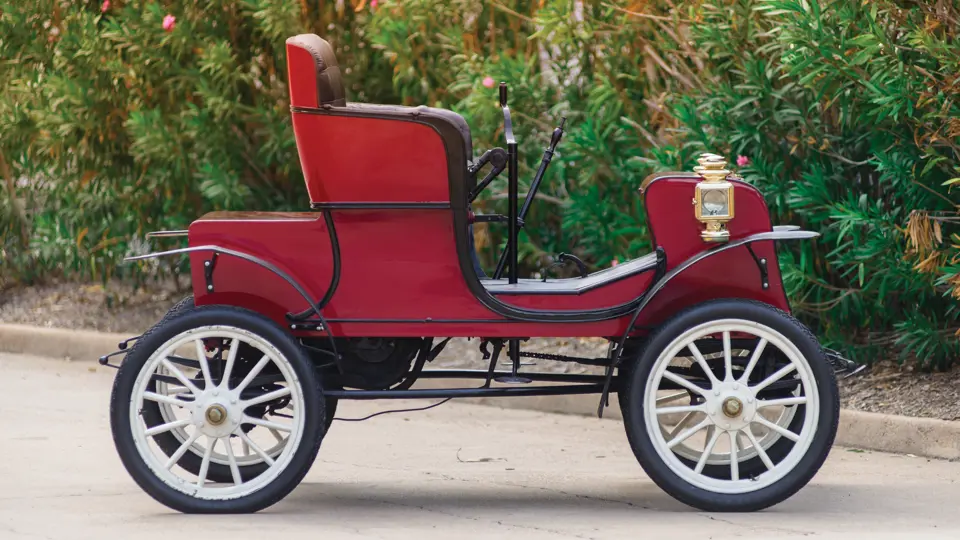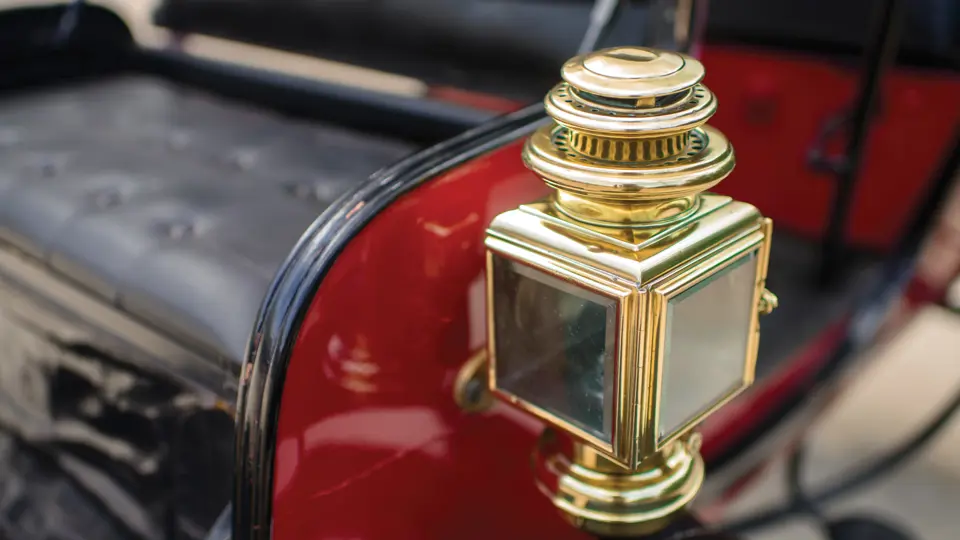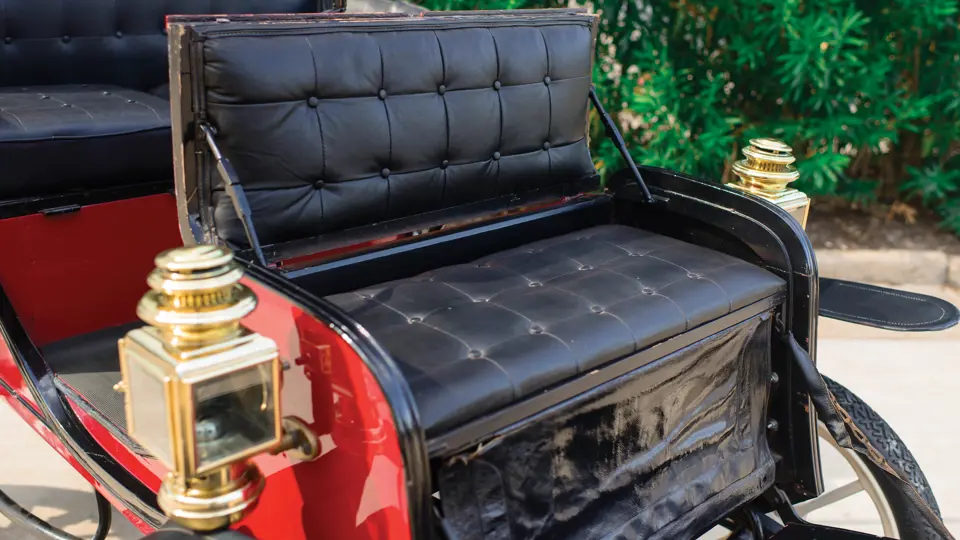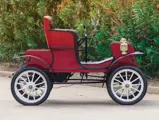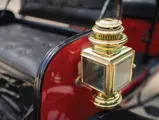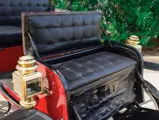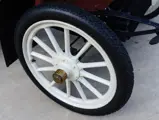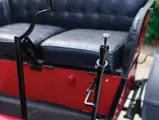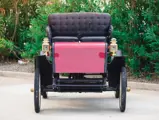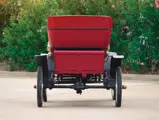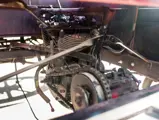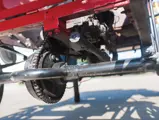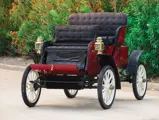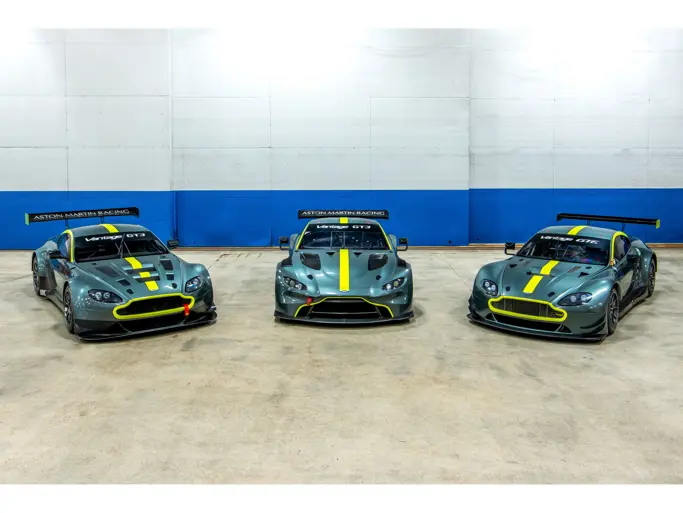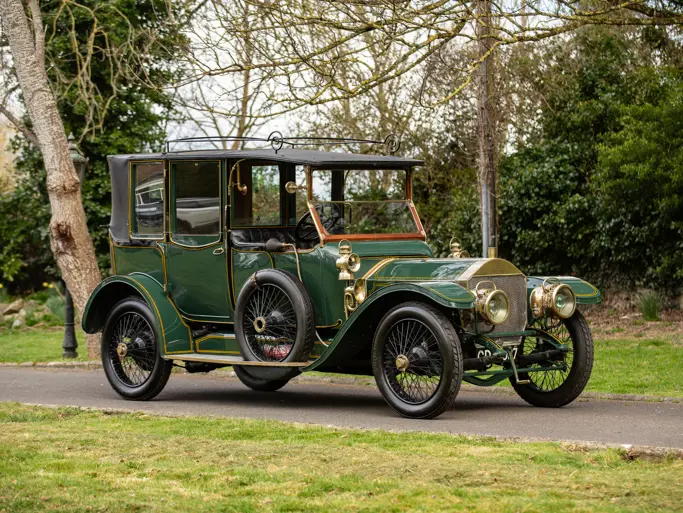Harley-Davidson V-twin-cylinder engine, chain-drive transmission, fully elliptic leaf-spring suspension, and rear-wheel mechanical brakes. Wheelbase: 69 in.
The car on the AACA seal, which is so prominent this week in Hershey, is the 1895 Duryea; it is widely considered to be the first automobile built in America with the intent to mass produce. Brothers J. Frank and Charles Duryea eventually had a falling out over who, exactly, was most responsible for the car, and they went their separate ways. Each was involved with numerous early automakers, but it was J. Frank’s partnership with the Stevens Arms & Tools Company, of Chicopee Falls, Massachusetts, that was the most fruitful and enduring.
While it would eventually become a large, grand, powerful tourer, the original Stevens-Duryea of 1901 was a sprightly runabout with an opposed twin-cylinder engine, a three-speed sliding-gear transmission, and steering by tiller. This basic design was utilized for three years, and it was noted for its outstanding build quality and charming good looks. One of the body’s most interesting features was a front apron that opened into a second seat, allowing a pair of passengers to be carried ahead of the driver, at the very front of the car. While not necessarily NHTSA-approved today, in the 1900s it was a fun, albeit breezy, way to double-date.
The Stevens-Duryea offered here is one of the earliest automobiles built by the company that is known to survive. It was acquired many years ago by the late collector LeRoy Healey, who displayed it at his Horseless Carriage Museum in Rapid City, North Dakota. Later, it was acquired by Harrah’s Automobile Collection and was sold in 1986 to a collector in the western United States. Twenty years later, Mr. O’Quinn eventually purchased this Stevens-Duryea from that collector.
The car’s body and most of the original chassis appear complete, solid, and presentable for display, even with its older red paint, brightwork, and button-tufted upholstery. It appears that many years ago the Stevens-Duryea lost its original engine, and in the 1940s or 1950s, as a means of making it run under its own power again, a Harley-Davidson V-twin engine, transmission, and frame from the 1910s were modified to fit under the original bodywork. They remain intact today and represent an amazing bit of ingenuity, as they were born out of tough times.
This charming little Stevens-Duryea would be a fascinating restoration project for the passionate enthusiast of veteran automobiles, as it is one of only a handful of early models surviving from this pioneering American manufacturer. It harkens back to both an era of “horseless carriages” and to the early roadside museums that preserved them.

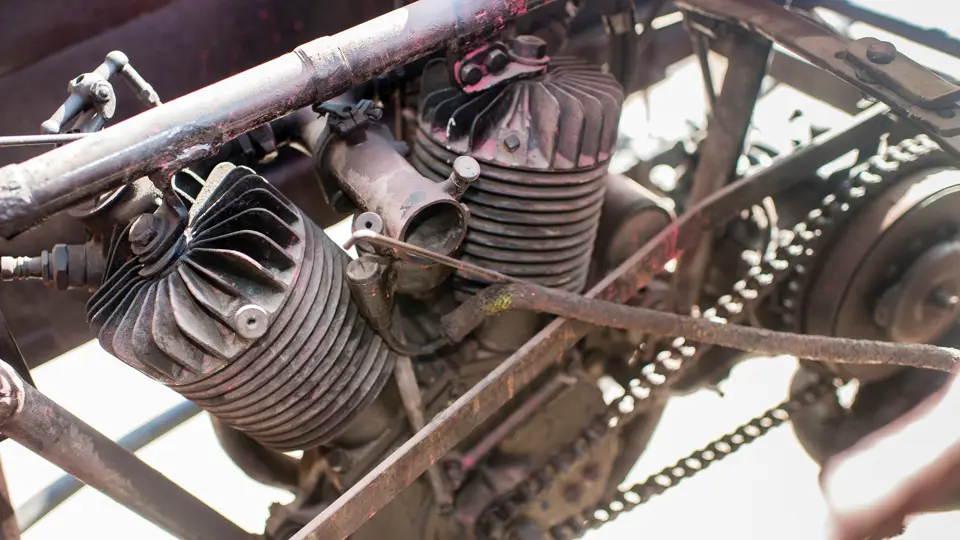


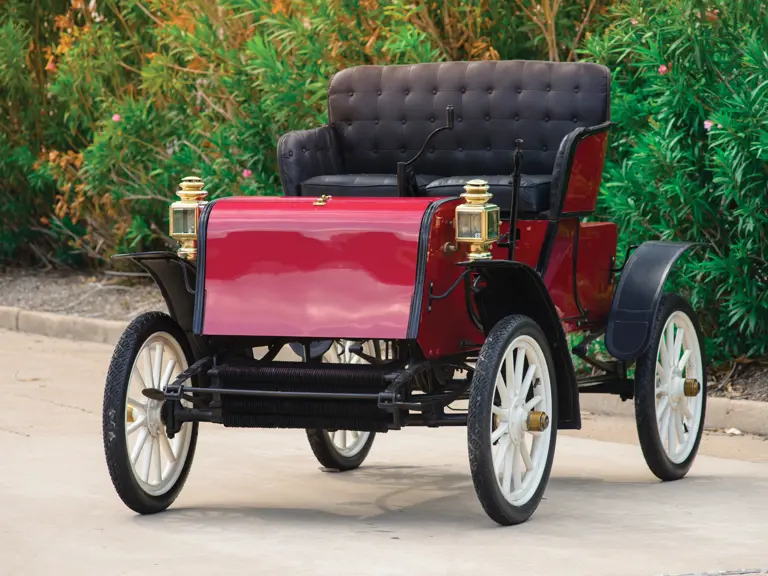

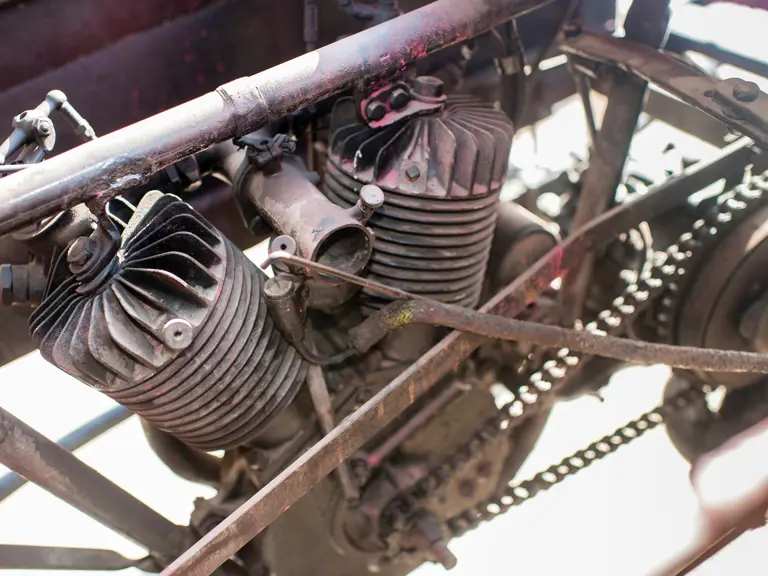



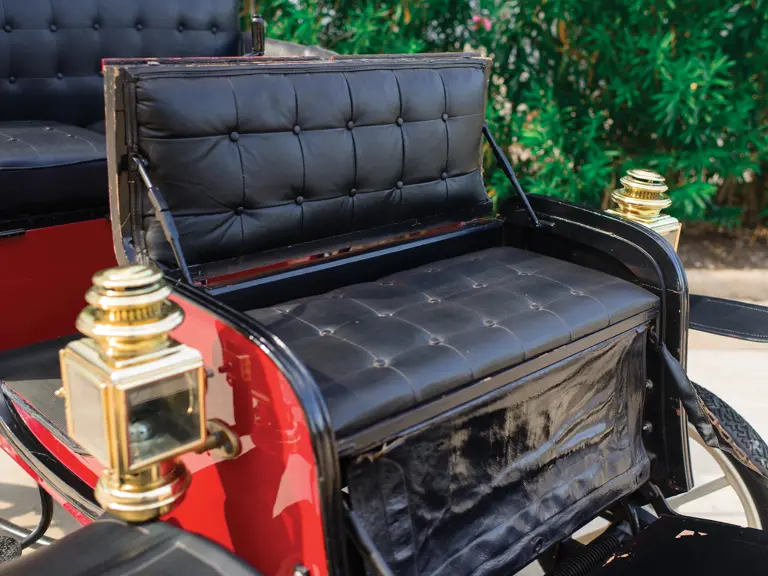
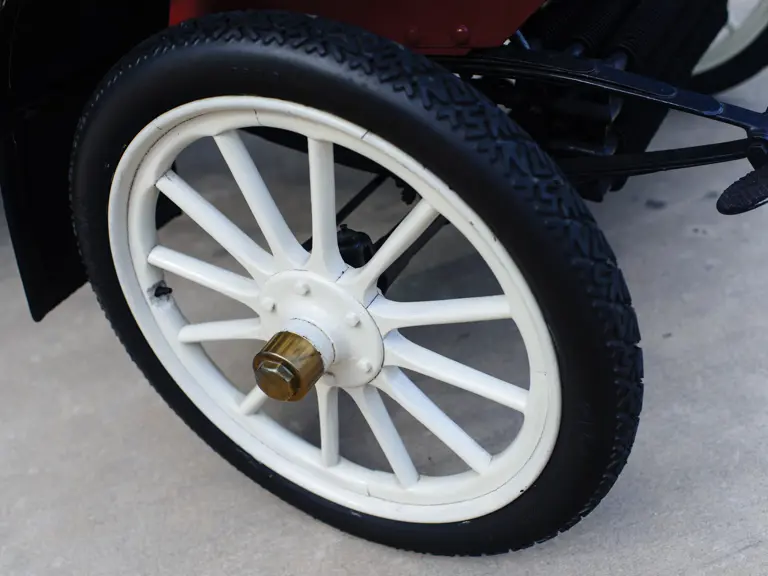
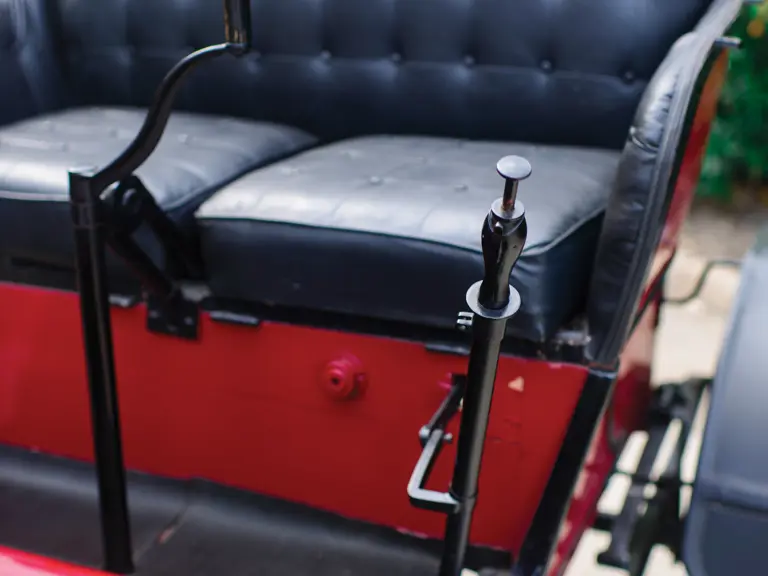
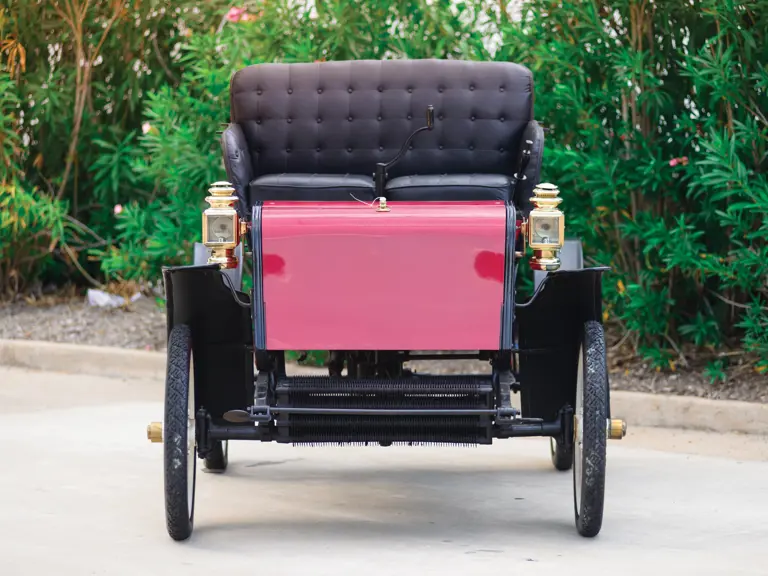



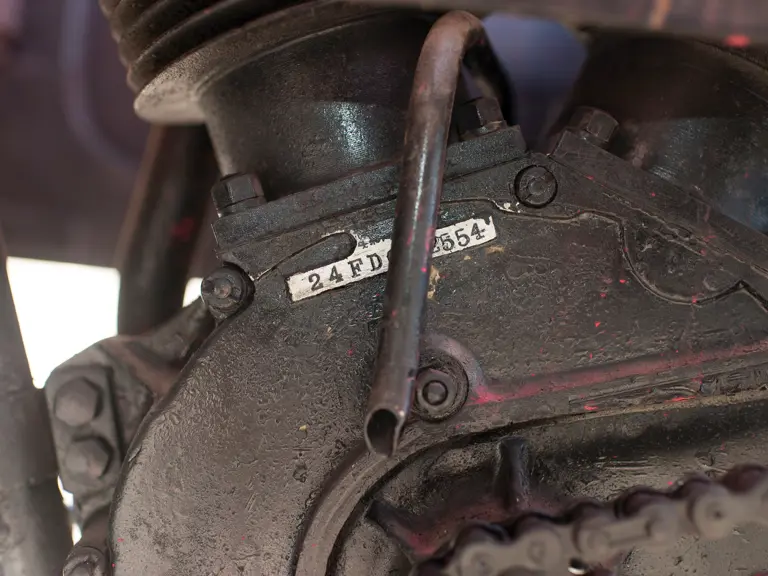
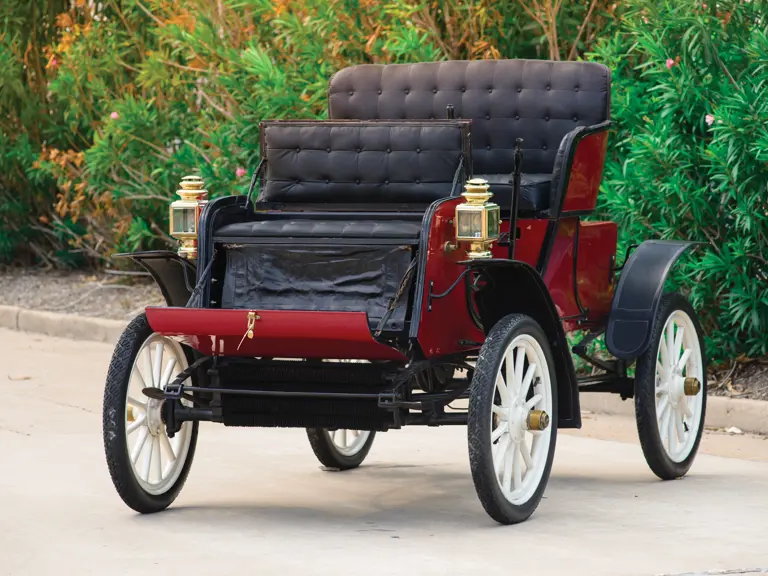
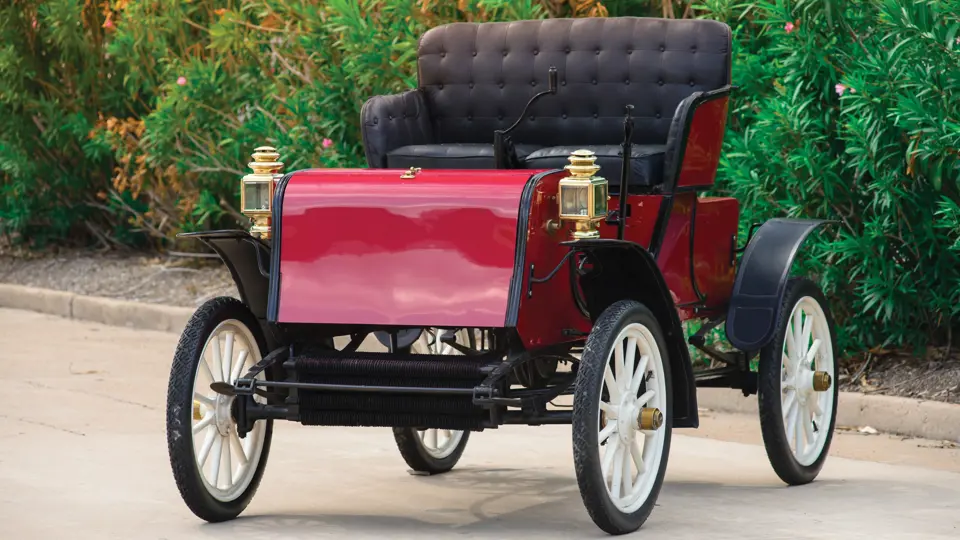
 | Hershey, Pennsylvania
| Hershey, Pennsylvania
